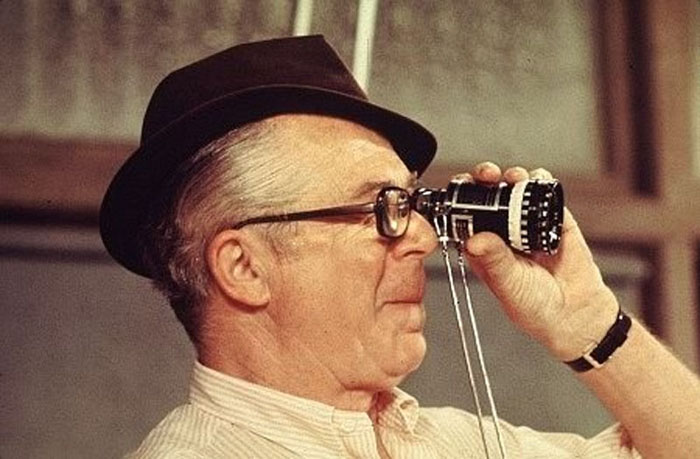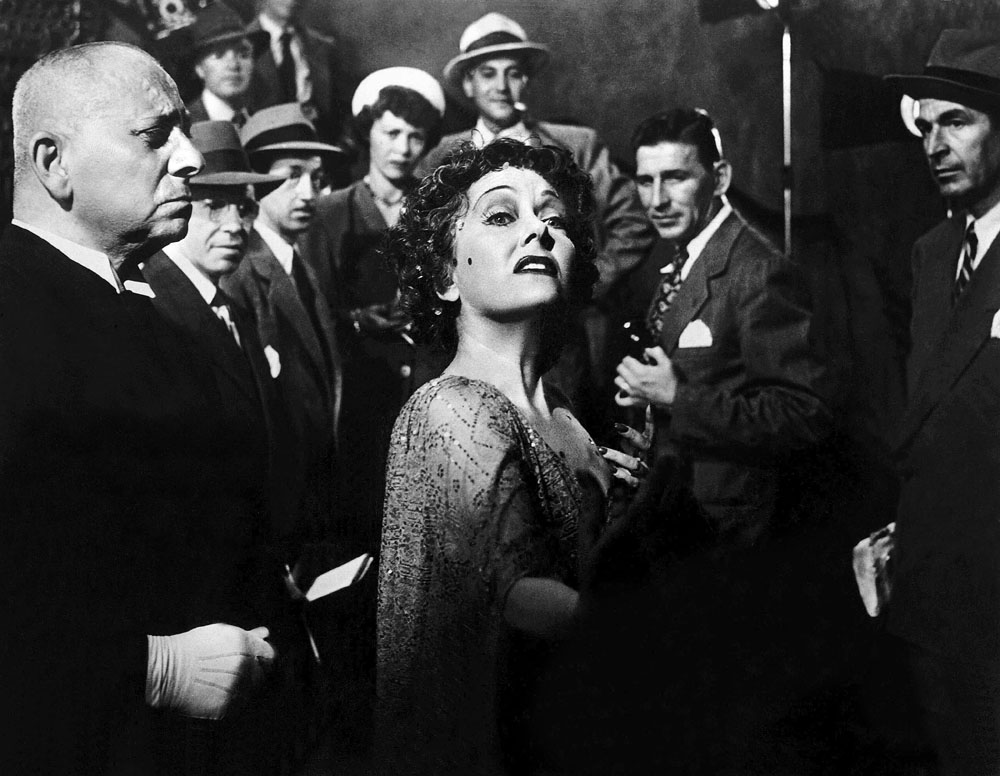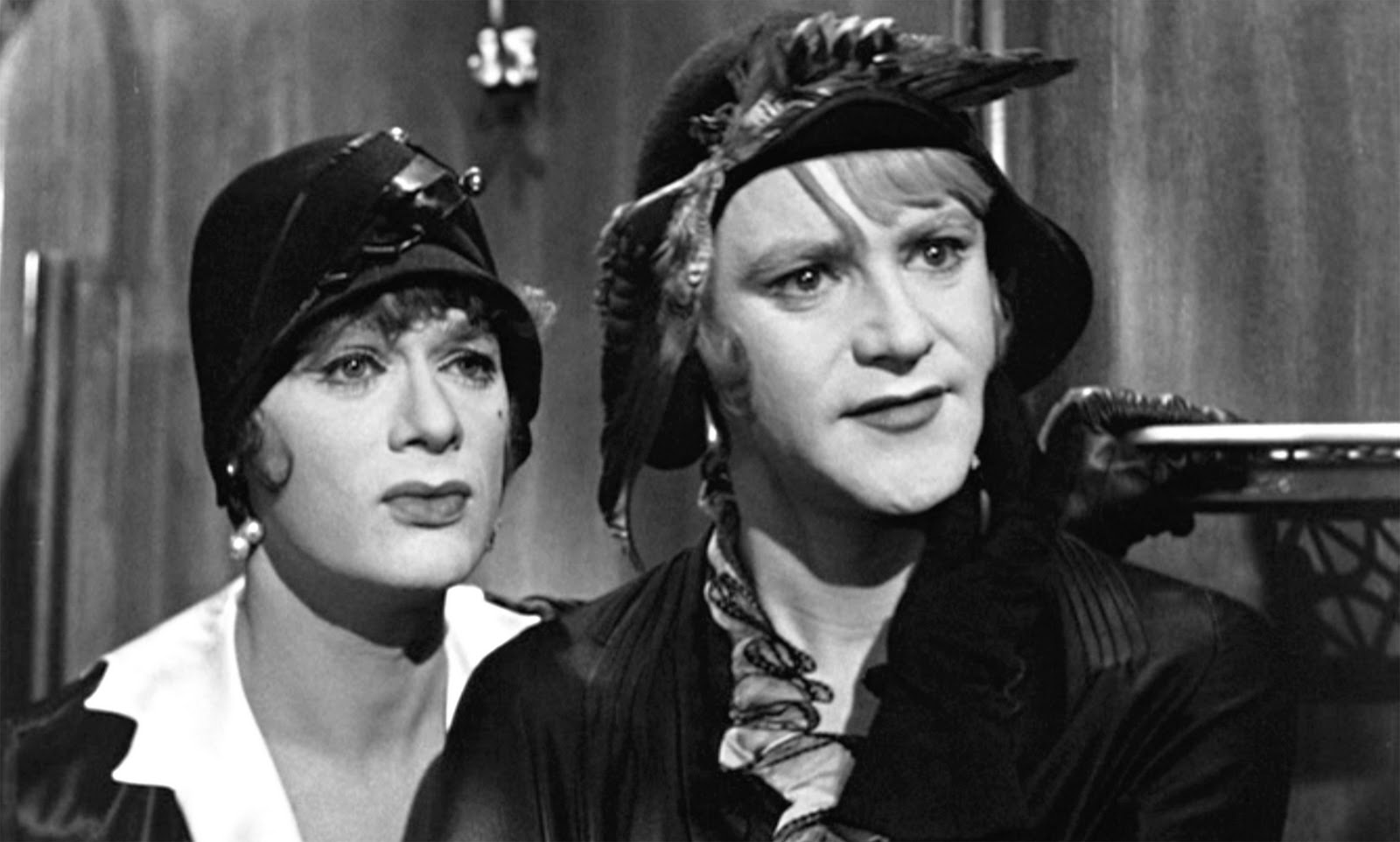
Nicknamed after Buffalo Bill by his mother, Samuel Wilder was born in the Austro-Hungarian village of Sucha (nowadays part of Poland) in 1906.
As a young man, Wilder tried to fulfil his parents’ aspirations by enrolling in the University of Vienna to study law, which he quickly left. He got a job in a major Berlin newspaper covering crime stories. The year was 1926.
In the period ranging from 1927-1929, Wilder managed to get small screenwriting gigs and did some ghostwriting in various film scripts (around 200). However, Wilder’s “official” film contribution came in 1929, a credit in the screenwriting of the film “Hell of a Reporter”, directed in 1929 by Ernst Laemmle, starting Eddie Polo. From then on, Wilder worked as a screenwriter in a number of German silent and early sound productions.
Nevertheless, ‘extraordinary’ historical circumstances dictated Wilder’s run from the country in 1933 – the year Paul Von Hindenburg appointed Adolf Hitler as Chancellor of Germany.
Wilder fled the country as many others did, some, like him, would also achieve notoriety within the Hollywood community: Douglas Sirk, Edgar G. Ulmer, Fritz Lang, Fred Zinnemann, Max Ophüls, Otto Preminger, Robert Siodmak and Peter Lorre. The last one having been Wilder’s roommate during their first times in Hollywood.
Around which, the future multiple Oscar winner worked on modest productions alongside writers that were able to translate his contributions. Examples of such productions were 1934’s “Music in the Air”, directed by Joe May and starring Gloria Swanson, where Wilder adapted Jerome Kern’s play to the screen. 1935’s “Under Pressure”, directed by Raoul Walsh, where Wilder wrote additional dialogue and “The Lottery Love” where Wilder wrote the screenplay alongside Franz Schulz.
In 1937, upon signing with Paramount, Wilder started to work in more prestigious productions such as 1938’s “Bluebeard’s Eighth Wife”, directed by Ernst Lubitsch, 1939’s “Midnight”, starring Claudette Colbert and John Barrymore; “Ninotchka”, a vehicle for Greta Garbo’s stardom and communist commentaries, 1941’s “Ball of Fire”, a comedy directed by Howard Hawks and “Hold Back the Dawn”, starring Olivia de Havilland, Charles Boyer and Paulette Godard.
However, 1942 was definitely an important year in Wilder’s career – it was the year he was finally given a chance to direct one of his scripts: “The Major and the Minor”, a comedy starring Ginger Rogers as a woman that disguises herself as a child in order to board a train catching the attention of an army major, Ray Milland, who feels confused by his attraction to such an apparently young girl.
From then on the Austrian-born director went on a spree of directorial efforts that remain still today essential when talking about American film history. These were, the ‘apotheosis’ of noir film – “Double Indemnity” (1944), “The Lost Weekend” (1945) and “Sunset Boulevard” (1950); classic comedies such as “Sabrina” (1954), “The Seven Year Itch” (1955) or “Some Like it Hot” (1959); WWII related films – “Stalag 17” (1953); or thrillers such as “Witness for the Prosecution” (1957) among many other interesting films.
In 1966, after directing “The Fortune Cookie”, Wilder’s luck changed drastically. He took a hiatus from the film industry and later returned with films that failed to impress critics and audience, for instance, he directed “The Private Life of Sherlock Holmes” in 1970, a film which was heavily cut and influenced by the studio he was working for and after this episode, “The Front Page” in 1974 or “Fedora” in 1978, remained this different faith. Studios somehow came up with reasons not to hire him making of “Buddy Buddy”, a last collaboration with Jack Lemmon and Walter Matthau in 1981, the last of Billy Wilder’s films.
After ending his career as a filmmaker. Wilder was known by having a large art collection that included some paintings by impressionist and surrealist painters such as Pablo Picasso, Japanese bonsais or ancient Chinese vases among other objects of artistic and historical interest.
Billy Wilder died in 2002 in his Los Angeles residence.
1. The Wilder Touch

“I. A. L. Diamond, Billy’s co-writer on his later classics like ”The Apartment,” ”Some Like It Hot” and others, had famously called the Wilder touch a combination of the sweet and the sour. Billy’s tales had a grand humour and a grand melancholy. Some called it cynicism, but his was a clear-eyed view of life in all its humour and pain.”
Like defined in Cameron Crowe’s article on Billy Wilder’s death for the New York Times (April 7, 2002), Wilder’s touch is ultimately one that best reaches to reality capturing its essence through its sweet moments of love and affection, its seriousness told by through light means of comedy and its savouriness captured by hard boiled landscapes and people often caught in the taboos of the asphalt jungle.
Therefore, to define Wilder’s touch as complicated as classifying life’s own ‘eclecticness’. A difficulty that translates Wilder’s ability as a filmmaker to make of Hollywood objects, ultimately pieces of cinema vérité.
It often evolves compromised characters caught in situations that explore taboo problems in American society during Wilder’s working period. Problems such as alcoholism – “The Lost Weekend” (1945); prostitution – “Irma La Douce” (1963); Corruption (moral and effective) – “Double Indemnity” (1944), “Ace in the Hole” (1951); the complexity of relationships between men and women as hunter and prayer – “Sunset Boulevard” (1950), “Some Like it Hot” (1959); Hypocrisy – “A Foreign Affair” (1948), “One, Two, Three” (1961).
Being hypocrisy one of the traces that paired up with cynicism dominates Wilder’s filmography being these the ones whose manifestation is earlier noticeable in the director’s works, for instance, in 1933’s “Bad Seed” (French: Mauvaise Graine), a film that follows the moral disintegration of rich young man named Henri Pasquier.
Of course, the Wilder’s touch presupposes of all these elements embroiled with great storytelling which Wilder was a pioneer on from a scriptwriting point of view often recurring successfully to flashbacks or narration like in “Sunset Boulevard” where the story is told by a dead body or in “Double Indemnity” where the story is remembered by the unlikely anti-hero.
How are things in Moscow?
Very good. The last mass trials were a great success.
There are going to be fewer but better Russians!
An example of Wilder’s use of cynicism in Ninotchka.
Again touching the element of reality, in Wilder’s films we can account for two ways of portraying reality, the first visually, the second psychologically.
Visually speaking there is a demand for a realist mise en scène on Wilder’s part and so the director often made choices to emphasize this idea for instance choosing real locations and actual urban setting to shoot in at a time where studios had their own “worlds” inside their walls (MGM’s backlots were so great in size that they had a real sized train as a mean of transportation for employees within the studio’s property).
This choice for realistic sets serves two important purposes, one that impresses by creating and maintaining a solid mood in a scene or film and second the purpose of producing approximation between reality and film and therefore emphasizing the connection between movie and movie goer.
And this last aspect is the bridge between visual realism and psychological realism. Connected to realistic sets were society’s hidden problems and so there is always even when exploring taboo questions a preoccupation from Billy Wilder to maintain a sort of quest for morality even among surrounding decay, most of times moral, a certain connection with seriousness and ethic that is noticeable even in his comedies where sex and human flaw, as well as, the role of men and women as dominators in the relationship is constantly remembered and explored.
Also noteworthy, within the Wilder touch, is the choice of musical genres that always tends to be related with blues or jazz, musical genres that within its roots were born as reactions to reality and human condition.
2. Wilder’s directorial versatility
Let’s put it this way – important landmarks in Billy Wilder’s filmography:
(1933) “Bad Seed” – drama, comedy.
(1942) “The Major and the Minor” – comedy, romance.
(1943) “Five Graves of Cairo” – thriller, war.
(1944) “Double Indemnity” – drama, film noir.
(1948) “A Foreign Affair” – drama, comedy, musical.
(1950) “Sunset Boulevard” – drama, film noir.
(1951) “Ace in the Hole” – drama, film noir.
(1953) “Stalag 17” – drama, war.
(1955) “The Seven Year Itch” – comedy, romance.
(1959) “Some Like it Hot” – comedy, romance.
(1960) “The Apartment” – comedy, drama.
(1970) “The Private Life of Sherlock Holmes” – adventure, crime.
3. Wilder’s Role in the Golden Era Editing School

Billy Wilder always vowed for simplicity and rejection pretension and this view point is, naturally, noticeable even in film form.
During Hollywood’s Golden Era, which corresponds to the studio system, there was a common practise to recur to edit transparency and invisibility. This was a golden role in order to let the audience dive into the film, there was a set of “rules” created during this period that are still used to this day, rules that promote continuity within film – being the best mise en scène the one you don’t notice.
Despite the imperative use of clarity and transparency in editing, Wilder can be put in a small group of “studio filmmakers” that were able to find ways of expressing themselves, their opinions or vital information on the film’s theme and ideas.
These filmmakers – such as Alfred Hitchcock, Fritz Lang, Michael Curtis or John Ford, who actually directed some of his films so that there would be only a way to edit it, found in editing a vehicle just like Wilder did passing his cynicism, his ideas, sexual elements and so on right through viewer’s eyes. It was a case of achieving depth without the liberties and resources that the French New Wave filmmakers would enjoy decades later.